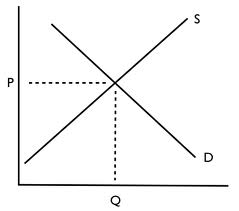How Jordan's Can Teach Us Personal Finance
/As I reflect on growing up in New York City, nothing reminds me more of my adolescent and teenage years than a pair of Jordan’s. I have a distinct memory attached to each Jordan release. It’s as if my memory is organized by Jordan release dates. (Don’t judge me, thanks). I recall the countless Saturday mornings I stood in line in front of the local Footlocker just to be one of the “chosen few” to get my hands on the new Jordan’s of the month. This naturally translated to wearing (read: showing off) them to school the following Monday. My memories are no different than many of my peers. We often sit around and exchange our Jordan stories almost as a seal of approval that we were cool “back in the day” before our lives became wingtips, suits, and ties.

When I watched the news on Christmas Eve and heard about the violence and chaos that occurred nationwide surrounding the release of the retro Jordan 11’s (aka the Concords), I was saddened. However, I know that as a teenager, I would have likely been one of those kids in line hoping to get my hands on a pair. (I may have kindaaaa contemplated the idea this time around, but again, I’m not here to be judged!) Instead of using this as an opportunity to blame the Jordan brand like many people did or declare to our youth that they should no longer buy Jordan sneakers, I thought this was a “teachable moment.” Here are a few key things we can learn from Jordan's:
- Saving – Instead of discouraging our youth from buying Jordan’s encourage them; however, do so constructively. Instead of giving them $180 to buy the latest sneakers, have them save for the sneakers. Sit down and set up a savings plan with a teenager, and have them calculate how much of their income (allowance, part-time wages etc.) they need to save each week in order to have enough money to afford the sneakers of their dreams. Have them create a chart in their home to track the progress of their savings effort and ask them about this regularly. Make savings cool and tangible!
- Invest – Who manufactures Jordan’s? Nike. Nike is a publicly traded company (NYSE Ticker: NKE). Reportedly, the Jordan brand accounts for almost 10% of Nike’s annual revenue. Introduce the youth to the stock market in this manner. Tell them they have the opportunity to own a piece of the company (shares) that creates Jordan’s and they ultimately can make money (shares increase in value) if more people buy Jordan sneakers since this translates into revenue for the company. Instead of buying the newest pair of Jordan’s encourage the youth to buy shares of Nike. Investing in the stock market has better long term prospects than investing in sneakers. Teach them to think like business owners and not consumers. (Remember Commandment #4 of Financial Empowerment, "Invest in the financial markets as a way to build sustainable wealth")
- Basic Economics – Jordan sneakers are a great tool to teach supply and demand forces. Explain to the youth that the cost of Jordan sneakers are influenced by the limited supply released by Nike in accordance with the outsized demand for the sneakers. As a result, Nike can charge $180 for the sneakers because they know a lot of people want them (demand). Also show them supply and demand in action. Pull up an EBay listing for a new pair of Jordan’s. Let them see how the sneakers can sell above the retail price because of the limited supply available and outsized demand.
It’s been years since I graduated from undergrad but I still remember my first day of Economics: 101 like it was yesterday. On the first day of class, my less-than-enthusiastic (read: boring) professor drew this graph on the board and told the class that if we mastered this concept the next four years would be a breeze. He exaggerated just a tad bit but I used my collection of life experiences as a Jordan fanatic to understand the concept of supply and demand and that economics class became that much easier.

Michael Jordan was a great athlete, arguably the best to ever play the game of basketball. He has turned out to be a phenomenal businessman as well, building a brand that will cement his legacy and continue his financial success even several years after retiring from the NBA. After all these years I can still say, “I wanna’ be like Mike.”

About the Author: Femi Faoye is the Co-Founder and Chief Executive Officer of D.R.E.A.M. He’s a staunch and passionate financial literacy education advocate.
Disclaimer:
Notwithstanding any language to the contrary, the views expressed in this post reflect those of the author and are solely theirs and do not reflect the views of Developing Responsible Economically Advanced Model-Citizens, Incorporated or any affiliates. Opinions are based upon information the author deems reliable but Developing Responsible Economically Advanced Model-Citizens, Incorporated does not warrant its completeness or accuracy and should not be relied upon as such. Neither the author nor Developing Responsible Economically Advanced Model-Citizens, Incorporated guarantees any specific outcome or profit from recommendations presented and you should be aware that losses may occur following any strategy or investment discussed. This material does not take into account your particular investment objectives, financial situation or needs. Before acting on information in this post you should consider whether it is suitable for your particular circumstances and strongly consider seeking advice from your own financial or investment adviser.
The contents of this post cannot be redistributed without the explicit written consent of the author and Developing Responsible Economically Advanced Model-Citizens, Inc. All images in this post owned by Developing Responsible Economically Advanced Model-Citizens, Inc. may not be used in any advertising, publicity, or otherwise to indicate members' sponsorship or affiliation with any product or service without the prior express written consent of Developing Responsible Economically Advanced Model-Citizens, Inc. All other images presented not owned by Developing Responsible Economically Advanced Model-Citizens, Inc. are the property of the author, respective company, or photographer. The rights to the images and likeness represented are under explicit ownership of the person(s) aforementioned.
